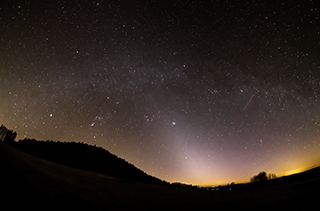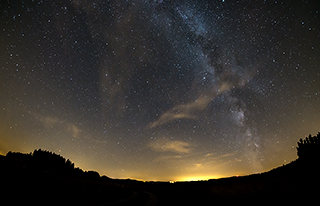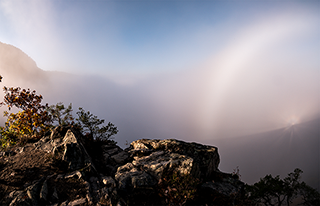
Samsung NX 500 & Samyang 8mm F2.8 UMC Fisheye II, interval 20 seconds, speed 600x
ISO 2500, exposure 15 seconds, F/2.8
20170327_1900-2100utc_Veliz_zodiacal-light_1620x1080.mp4 (32 MB)
and the same sequence (slightly longer, 19:00-21:20 UTC), with star trails at the end of the movie:
20170327_1900-2120utc_Veliz_zodiacal-light_startrails_1620x1080.mp4 (35 MB)
Zodiacal light from central Europe. While
spectacular images of zodiacal light captured under dark sky of tropics
and subtropics became more frequent in last years (see e.g. stunning
photos taken by Yuri Beletski or Petr Horálek),
it is rather difficult to find a good location for this type of
photography in heavily light-polluted areas, such as Central Europe.
This sequence was captured from slopes of Velíz Hill, about 40km
southwest of Prague, Czech Republic (westward view, see this DNB image
taken on the same night several hours later). The brighter sky at left
part of the scenery is illuminated by 40km distant Plzeň (Pilsen),
while the strong yellow light at right comes from 20km remote
Rakovník. See also static images from this sequence: zodiacal
light at 19:02 UTC and at 19:15 UTC, and star trails (and aircraft tracks) image, based on all images from 19:00-21:20 UTC, created by StarStaX software.

Samsung NX 500 & Samyang 8mm F2.8 UMC Fisheye II, interval 30 seconds, speed 900x
ISO 2500, exposure 25 seconds, F/2.8
20170823_1930-2400utc_Jankovska-Lhota_MW_1680x1080.mp4 (42 MB)

Samsung NX 500 & Samyang 8mm F2.8 UMC Fisheye II, interval 5 seconds, speed 150x
20171015_0640-0820utc_Mysak_1680x1080.mp4 (86 MB)